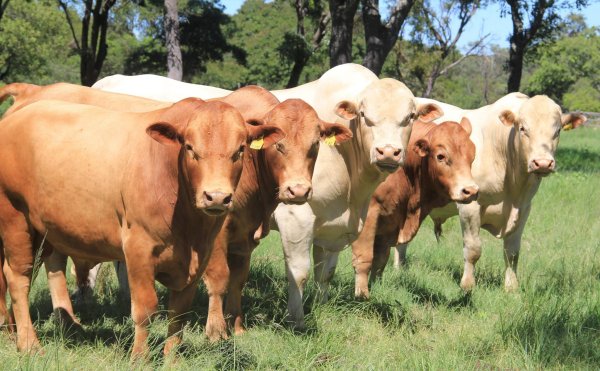SADC scores many firsts in the development of red meat and live animal value chain
Posted by Angela Mutegi on 23 June 2023 2:50 PM CAT

"Livestock Development Strategy (LiDeSa) has been our lighthouse, guiding the livestock sector into better actions, and Live2Africa project the vehicle, that drove systematic capacity across member states and regional organizations,” explains Dr. Mary Mbole-Kariuki, Technology, Innovation and Skill development Expert, for the AU-IBAR, Live2Africa Project, noting that there has been systematic capacity-building on the value chain system across AU Member States and regional organizations. “We set out to increase technical and infrastructural capacities, and developed capacities on the use of data for evidence-based policies, involving stakeholders and key actors in value addition processes pertaining to livestock value chains,” she adds.

First regional breed-specific breeders’ society in Africa
Having prioritized red meat and live animal (beef and small ruminants) value chain, the Southern Africa Region established Tuli Cattle Federation of Southern Africa, the pioneer regional breed-specific breeders’ society in Africa. The society was established to avert the dwindling population of the Tuli cattle breed. “We do not want to lose our indigenous breeds, we need them as the foundation for their ecologically important traits,” states Dr. Mary Mbole-Kariuki, the Technology, Innovation and Skill development expert, for the AU-IBAR, Live2Africa Project. Through the project, a constitution was developed, endorsed and validated, and an executive committee constituted with AU-IBAR and SADC as ex-official members, and two other non-voting members states.
The Tuli breed descended from the Awabowe breed, which survived the devastating and widespread Rinderpest epidemic of 1896. The breed is highly resistant to internal and external parasites, has a natural ability to survive and reproduce in extreme environments such as semi-arid deserts, savannahs, hot and cold temperatures, while producing beef and dairy products that rival most established breeds. These characteristics have propelled Tuli's growing popularity.
First ever combined breed run for Tuli Cattle
A combined breed-run to enable the genetic evaluation of all Tuli herds across the region was developed. “This is the first combined breed run for Tuli Cattle, and in Africa,” quips Dr. Mbole-Kariuki.
With the genetic evaluation tool, genetic references were looked at from all the populations where data could be gathered, including Zimbabwe, Botswana, and all over South Africa. This was followed by an analysis based on performance evaluation. If, for example, an animal is a good performer, there is a certain genetic component that it’s farmer will see. Farmers can now genetically evaluate their animals, grade them based on what is good, and remove the genomically weak from the herd. “The next step is to establish a genetically referenced herd, and train the farmers’ association on how to genetically evaluate their animals as per breeding values,” explains Dr. Mbole Kariuki. This will help improve population and production.
Capacitating regional seed centres of excellence
Through the project, the regional Seed Centre of Excellence located in Botswana was capacitated with a cold cabinet to ensure seed samples were undertaken under sterile conditions. The centre will be capacitated with the best quality Tuli Cattle Seed to make it more accessible. “With this, a country like Malawi may improve its seed by using animals from Botswana, South Africa, and Namibia, who have very good animals,” says Dr. Mbole-Kariuki noting that the region is already upgrading its Tuli Breed by cross-breeding it with other exotic breeds. “I liked what I saw. There are now cross-bred animals of Tuli and Wagyu Breed. Its mumbling is perfect; that is, its meat is tastier and fattier,” she adds. The Tuli is a superior breed. It is strong, handy and knows how to foliage. It can be cross-bred with other exotic animals to enhance their good qualities.
First ever harmonized regional grading and classification system.
The Southern Africa Region was also the first to harmonize its regional grading and classification system for red meat and live animals. This will normalize all kinds of grading. If, for example, a farmer has an indigenous animal that does not have enough mumbling, there is a grading system that will give a classification with other qualities, enabling the farmer to earn good money. This equalizes the market. “The SADC Region has very strong indigenous animals, but because they are considered of lesser trade value to the exotic animals, farmers are always disadvantaged on account of the biased classification system. We envisage that at the end of the day, even the small holder keeping indigenous cattle, is also involved in that market stream,” Dr. Mbole-Kariuki observes.
Regional self-assessment score card
A regional framework and self-assessment score card for strengthening the Public Private Producer Partnerships (PPPPs) was developed. “The perceived imbalance saw the ‘big boys’ running the show and the ‘little ones’ were just there, creating a lot of mistrust,” notes Dr. Mbole-Kariuki. Best practices for producers, the private sector and the public sector, were developed, establishing a competitive advantage. “The best of this is the country’s self-assessment scorecard that has six components including country’s readiness, whether there is capacity to do PPPs, whether the system was functional,” she explains. A measure on the contribution of the private sector and each player was developed, with a score. Among the proposed intervention areas is a digital evaluation tool.